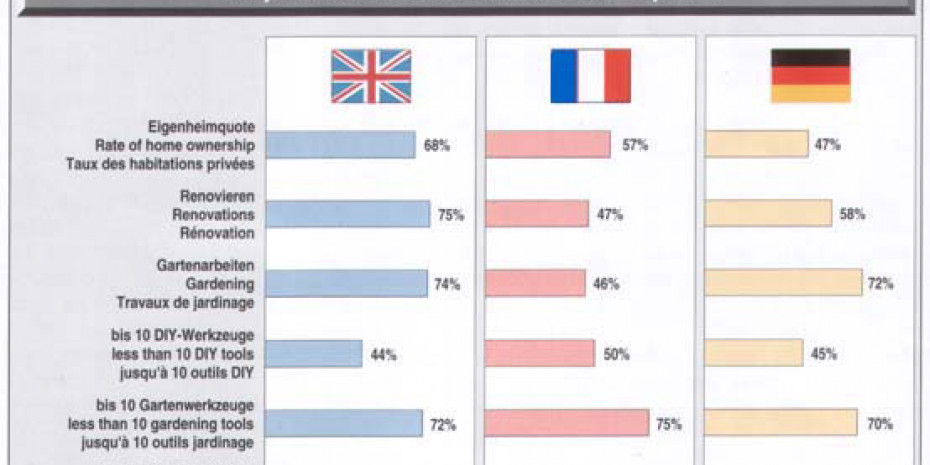Although DIY counts as one of the most popular leisure activities throughout Europe, considerable differences are discernible with regard to motivation, expectations and preferences between British, French and German consumers. To some degree the typical national attitudes to DIY can be explained by differences in cultures and habits. Added to this are socio-demographic factors such as the rate of ownership, as well as the influence of advertising and the means of communication used by national retailers and manufacturers.
One of the fundamental differences in the three countries is the rate of ownership, i.e. the percentage of property-owning households, which varies from 68 per cent in the United Kingdom to 57 per cent in France and 47 per cent in Germany. The owner of a house or flat will invest more time and money in renovations and repairs than a tenant. Which means that there is considerable market potential for products suitable for tenants: products that can be removed without difficulty when moving house.
The British are most interested in DIY, with 75 per cent of consumers having carried out renovations in the last 12 months and 74 per cent having worked in the garden. DIY is more popular in the United Kingdom than in the other two countries. One of the reasons for this is the number and popularity of DIY programmes on TV, which contribute considerably to the positive image of the DIYer.
Gardening is more popular than DIY in Germany, where 58 per cent of consumers have done renovations and 72 per cent have worked in the garden. There is great growth potential for both areas in France, where only 47 per cent of those questioned have been active as DIYers and 46 per cent have worked in the garden.
Considerable potential for tool manufacturers and suppliers comes to light as well, since the proportion of consumers with less than ten DIY tools is 44 per cent in the United Kingdom, 50 per cent in France and 45 per cent in Germany. Less than ten gardening tools are…







